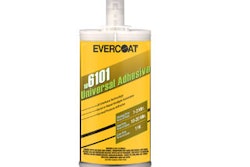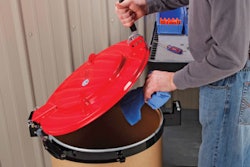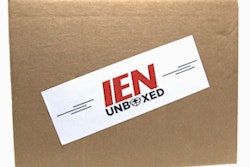IMPO: What trends are you seeing in industrial manufacturers’ inventory management?
Meeta Kratz, Senior Director, Customer Business Issues, Grainger
Kratz: More than ever before, Grainger is seeing manufacturers move to “just-in-time” inventory as much as possible to reduce excess spend on items that do not turn quickly. Manufacturers now better understand the cost savings and efficiency gains that come from stocking only what inventory is critical to have and leveraging supplier partners to deliver all other items as they are needed.
It is exciting to see this shift as manufacturers embrace inventory management as a valuable practice that helps to take costs out of their business.
IMPO: What are the key elements of a good inventory management program?
Kratz:
- Customer-centric: A good inventory management program is one that is customer-centric and offers a breadth of options that accommodate a wide range of specific needs from the very simple to the very complex. For example, one manufacturer may need a vending solution managed by a supply partner, while another manufacturer may prefer to accomplish their goals with a low-cost labeling solution.
- Based on actual usage data: By taking a customer-centric approach, a program should then be based on inventory usage data so the right items, in the right quantities are stocked in the right place, with the right solution. Without leveraging actual data, a manufacturer cannot realistically understand their inventory usage patterns, which may result in leveraging an inappropriate solution that doesn’t effectively support their cost savings goals.
- Flexible: A solid inventory management program should be flexible and accommodate changes in production cycles and/or seasonal changes in plant activity. For example, whether a manufacturer makes a change to a line as a product design changes or if they have a winter shutdown to refurbish production areas, as the work load and the production types change, so does the inventory to support that work. These changes require a review of inventory items to support the changing demand and the right inventory management program should align seamlessly with that process.
- Supported by Experts: Selecting a program that offers easy access to technical and expert support is also key. A manufacturer should focus on their core business and lean on a partner who specializes in understanding the complexities of inventory management and offer guidance and support their specific needs.
IMPO: Are on-premise supplier vending solutions growing in popularity? When might on-site supplier vending be the best solution?
Kratz: When it comes to dispensing solutions, they provide great value when used appropriately and stocked with the right products for the need and placed strategically.
Vending solutions are best used for high volume, potentially valuable inventory that an organization wants to make readily available to their employees when needed, while still being able to control and monitor access and usage. Our customers tend to use products that turn at a high rate like safety or material handling products in point of use vending solutions.
A dispensing solution also helps to eliminate crucial downtime for plant staff. By positioning a dispensing machine strategically near the point of use, it eliminates the need for staff to walk to a remote tool crib or storeroom, which decreases downtime and increases productivity.
IMPO: How can industrial manufacturers decide what inventory is worth investing extra management in?
Kratz: Nearly all manufacturers can benefit from investing in some kind of inventory management system, with the complexity of the solution based on the unique needs of the facility.
To better understand the general opportunity, Grainger conducted extensive research that found 40 percent of inventory on shelves is only turned one to five times per year. In addition, 50 percent or more of an organization’s inventory is “inactive” and is not used in a year’s time, yet the organization must still stock and manage those items. The bottom line is that there is opportunity in nearly all facilities to better manage inventory and to help them achieve their inventory management goals.
IMPO: What would you say to a manufacturer who is apprehensive about utilizing vendor managed inventory?
Kratz: To become more comfortable with a vendor managed program, it is important to work with a partner who invests in your needs and understands what you're trying to achieve. You must ask questions up front to ensure your concerns are addressed. You should also challenge your partners to make sure you understand the program to ensure it fits your needs and not just theirs.
You should also do your homework. Talk to peers in your industry who are using vendor managed inventory to learn what they like about their programs and where there are opportunities for improvement.
And remember, you can start off slowly with a more simple solution and graduate to a more complex strategy as you comfort level increases.
IMPO: What sort of successful byproduct solutions have you seen after an inventory management solution has been implemented?
Kratz: Grainger has seen its customers experience a multitude of positive, byproduct solutions that are a result of implementing successful inventory management programs. Everything ranging from exposing unexpected safety gaps and then being able to realize increased safety compliance to reducing tool crib space that was then used to expand a production floor to support profit, inventory management has led to some very significant, indirect benefits for our customers.
One notable story was a customer who was able identify so much inactive inventory and reduce its inventory storeroom space so dramatically that the newly freed up space was repurposed to house a training facility that was previously being leased offsite. The customer was able to greatly reduce its training costs by leveraging the new space that was made available with the removal of obsolete inventory.
IMPO: What sort of implications can a successful inventory management system have for workplace safety?
Kratz: A successful inventory management program can greatly improve safety compliance and reduce safety incidents by putting crucial safety products where they need to be, when they are needed. Proper inventory management of safety supplies gives manufacturers the ability to control and track who was issued an item and when, which helps to ensure that the employees are using the right safety products, and provides the documentation to substantiate issuance of the correct safety items in the event of an audit.
Research also indicates a strong link between workplace safety and the control of hazardous chemicals. As discussed earlier, an effective inventory management system can also limit access to controlled items, which can reduce the possibility of a hazmat event and/or another safety incident.
By demonstrating a commitment to safety products by adopting a formal inventory management program, manufacturers are sending a strong, positive message to staff about the importance of safety.























